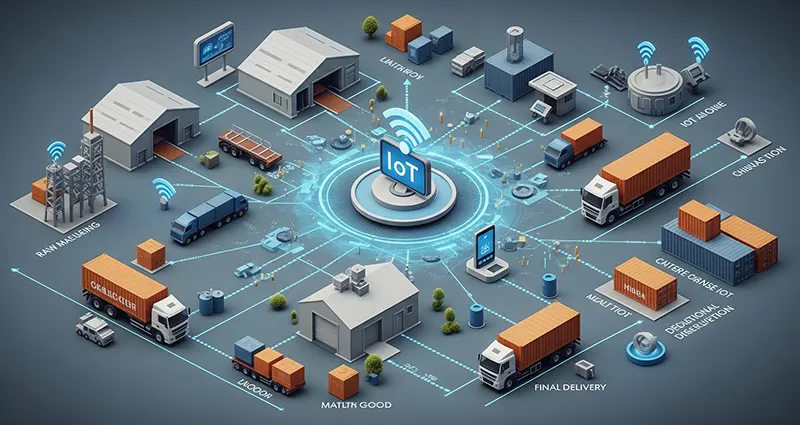In the dynamic landscape of modern supply chains, the integration of Internet of Things (IoT) technologies has emerged as a game-changer, revolutionizing the way businesses manage, monitor, and optimize their operations. From enhanced visibility and real-time tracking to predictive analytics and automated decision-making, IoT is reshaping supply chain management practices, driving efficiency, agility, and resilience. This article delves into the profound impact of IoT on supply chain visibility and optimization, illuminating the transformative potential of connected technologies in redefining the future of logistics and operations.
The Paradigm Shift in Supply Chain Visibility:
- Real-Time Monitoring and Tracking: IoT devices such as sensors, RFID tags, and GPS trackers enable real-time monitoring of assets, inventory, and shipments across the entire supply chain network. By capturing and transmitting data on location, condition, and movement of goods, businesses gain unprecedented visibility into their operations, allowing for proactive decision-making and responsive actions.
- Data-driven Insights and Predictive Analytics: IoT-generated data streams provide valuable insights into supply chain performance, demand patterns, and operational inefficiencies. Through advanced analytics and machine learning algorithms, businesses can harness this data to predict trends, identify bottlenecks, and optimize resource allocation, leading to improved forecasting accuracy and operational efficiency.
Empowering Supply Chain Optimization through IoT:
- Automated Inventory Management: IoT sensors integrated into warehouse shelves, storage bins, and transportation vehicles automate inventory management processes, enabling real-time inventory tracking, replenishment alerts, and demand forecasting. By streamlining inventory control and reducing stockouts, businesses can optimize inventory levels, minimize holding costs, and enhance supply chain efficiency.
- Dynamic Route Optimization: IoT-enabled fleet management systems leverage real-time data on traffic conditions, weather forecasts, and vehicle performance to optimize route planning and scheduling. Through route optimization algorithms, businesses can reduce transportation costs, increase delivery speed, and minimize fuel consumption, leading to enhanced operational efficiency and customer satisfaction.
Harnessing the Power of IoT for Supply Chain Resilience:
- Risk Mitigation and Contingency Planning: IoT sensors embedded in critical supply chain assets and infrastructure facilitate proactive risk mitigation and contingency planning. By monitoring environmental conditions, equipment health, and security vulnerabilities, businesses can anticipate potential disruptions, implement preemptive actions, and enhance supply chain resilience in the face of unforeseen events.
- Collaborative Supply Chain Ecosystem: IoT platforms enable seamless communication and collaboration among supply chain partners, vendors, and stakeholders, fostering a connected ecosystem of interconnected systems and data exchange. By sharing real-time information, streamlining communication channels, and fostering transparency, businesses can build trust, reduce lead times, and optimize end-to-end supply chain processes.
Embracing a Connected Future of Supply Chain Excellence:
The transformative impact of IoT on supply chain visibility and optimization heralds a new era of interconnected, data-driven logistics management. By embracing IoT technologies as strategic enablers of efficiency, agility, and resilience, businesses can unlock the full potential of their supply chains, drive operational excellence, and stay ahead in today’s competitive marketplace. As the digital revolution continues to reshape the global supply chain landscape, the integration of IoT solutions promises to redefine the future of logistics and operations, empowering businesses to navigate complex challenges, seize new opportunities, and navigate the path to sustainable growth and success.









